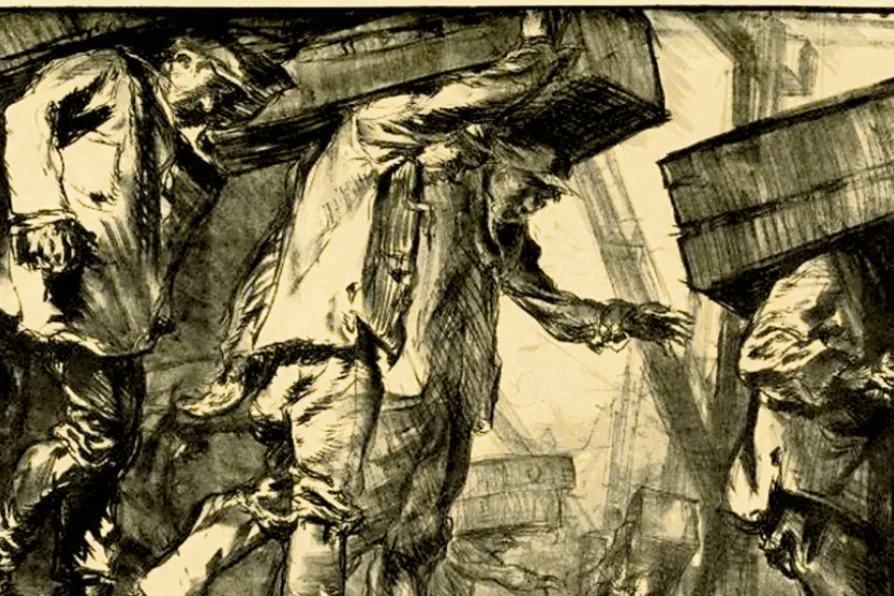The bard pays homage to his two muses: his wife and his football club
Feeling at home among workers
CHRISTINE LINDEY is touched by an exhibition of evocative prints by Frank Brangwyn who shunned formal innovations in favour of socially conscious work

 Unloading oranges at London Bridge
Unloading oranges at London Bridge
Frank Brangwyn’s Prints
Brighton Museum
Prints and Drawings Gallery
Royal Pavilion Gardens
Brighton BN1
Who nowadays has heard of Frank Brangwyn (1867-1956)? Yet he’d had the greatest international reputation of any British artist, he exhibited with Monet, Whistler and Degas, was feted by the Vienna Secessionists and was praised by Kandinsky.
Born in 1867 in Bruges to Anglo-Welsh, Catholic parents, he grew up in London from the age of eight.
Similar stories

BLANE SAVAGE recommends the display of nine previously unseen works by the Glaswegian artist, novelist and playwright

NICK MATTHEWS previews a landmark book launch taking place in Leicester next weekend

From van Gogh to Sonia Boyce, from Hew Locke to Patrick Carpenter and... Pablo Picasso

CHRISTINE LINDEY welcomes a fascinating survey of the work of the communist and socialist artists who founded the AIA in the 1930s










